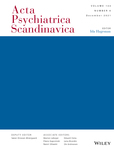Limited evidence base on cause-specific excess cardiovascular disease (CVD) mortality in bipolar disorder (BD) is a barrier to developing preventive interventions aimed at reducing the persistent mortality gap in BD.
To investigate cause-specific CVD mortality in BD.
We identified all individuals aged 15+ years during 2004–2018 with a diagnosis of BD using Finnish nationwide routine data. Standardised mortality ratios (SMR) with 95% confidence intervals (CI) were calculated using the mortality rates in the general population as weights.
53,273 individuals with BD (57% women; median age at BD diagnosis, 40 years), were followed up for 428,426 person-years (median, 8.2 years). There were 5988 deaths due to any cause, of which 26% were due to CVD. The leading cause of absolute excess CVD mortality was coronary artery disease (CAD). The leading causes of relative excess mortality were cardiomegaly (SMR, 4.51; 95% CI, 3.58–5.43), venous thromboembolism (3.03; 2.26–3.81), cardiomyopathy (2.46; 1.95–2.97), and hypertensive heart disease (2.12; 1.71–2.54). The leading causes of absolute CVD mortality showed markedly lower relative excess, including CAD (1.47; 1.34–1.61), ischaemic stroke (1.31; 1.06–1.54), and acute myocardial infarction (1.12; 0.98–1.25). Due to the higher relative excess mortality, structural and functional heart disorders contributed as much as atherosclerotic and ischaemic disorders to the absolute excess mortality.
Cardiomyopathy and hypertensive heart disease as the leading causes of relative excess mortality emphasise the contribution of structural and functional heart disorders to the overall excess mortality alongside coronary artery disease. Interventions targeted at these modifiable causes of death should be priorities in the prevention of premature excess CVD mortality in BD.


